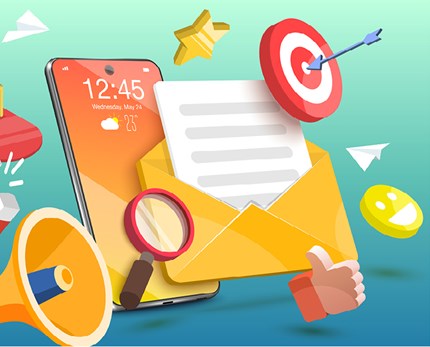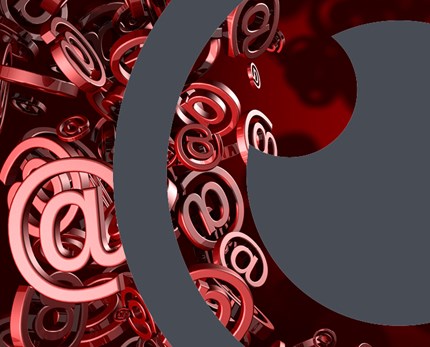Seven steps to creating truly stand-out emails

- 17 May 2021
Ensure your emails stand out in a wave of post-pandemic sending with these seven simple steps
Email marketing is a flexible channel. It’s therefore ideal for responding to the rapidly changing nature of the coronavirus pandemic. However, as regulations change and businesses reopen, customers' inboxes may become increasingly crowded. So how can you ensure your emails stand out right now? Here are the top recommendations from CIM’s email marketing course director, Olly Beckett.
-
Captivating content
If you’ve been out of touch with your audience during the pandemic, don’t simply pick up where you left off with no acknowledgement of the situation.
If your aim is to sell to your subscribers, create an event out of lockdown easing. Going further, offering vouchers, giveaways, competitions, or ideally all three in an extended event will help you stand out if the copy is exciting enough:
- “June joy: discounts, freebies and competitions all month!”
- “We’re back! Unmissable offers in your inbox.”
If your business model is about information, rather than products, then this is an opportunity to draw on that storytelling expertise and enhance your brand affiliation:
- “Here’s what we’ve been working on”
- “Top 5 ways [your brand] has become even better.”
Regardless of whether you’re selling something, informing customers, in B2B or B2C, then you must let your customers know what they can expect as an ongoing subscriber. Think of this as a 'welcome back' campaign. Some suggestions:
- “In the coming months we’ll be sending you useful information on…”
- “Why it’s great to be a [brand] subscriber.”
The key is to re-engage that long-term relationship now that you can begin to plan for the future again.
-
Personal touch
Writing to your subscribers as if you were having an honest conversation is an unusual thing to do, but there have been companies who did this in engaging ways during lockdowns. These are some examples of what this may look like:
- “Our Cheltenham branch manager has a recommendation for you”
- “A message to [customer name] from Olly.”
This sort of message can resonate more when it’s from someone not in senior management. By doing this the recipient will be reminded that there are actual, real people who work for – and are passionate about – your organisation; internal brand advocacy will always be a great selling point. The body of your email can then be a simple note with updates on company news, and exciting things to look out for in the coming months.
-
Simple personalisation
Personalisation can be particularly eye-catching when it goes beyond basics such as first name, or by not simply putting first name at the beginning of a subject line. For example:
Subject line: Why we ❤️ [customer name]
Body copy: In 2019 you bought some rather stylish [product] from us. How are you getting on with them? Let us know here [link to feedback page].
Using personalisation within the body copy creates a better flow in your emails. If you have more sophisticated data on your customers, using it in this way can really help with engagement.
An example of this is easyJet, who recently sent me email reflecting on my relationship with them. They used unconventional data such as cities I’d travelled to with them, distance I’d flown, and which seat I preferred, to create a fun email that weaved in a “If you liked those, you’ll love these” sales message.
-
Stand-out subject lines
I go into detail on how to use subject lines to capture attention as part of my email Marketing course, but here are some tips that will help during this challenging time:
- Emojis:
- Definitely use them, but sparingly. If all your subject lines use emojis they will have less impact
- Don’t just put emojis at the beginning of a subject line
- Avoid placing two emojis together.
- Personalisation:
- Again, use sparingly for greater impact
- As per above, use personalisation other than first name.
Additionally, be cautious with capitalisation. If you don’t have deliverability issues, and the IP address from which your emails are sent has a good reputation (you can check here), then occasional all-caps words – but not entire subject lines - are a great way to CAPTURE attention.
-
Timed to perfection
Timing is everything, and you can’t take it for granted. If you’ve tested the best time to deploy your emails before, it could be an advantage, but the world has changed dramatically. More people now work from home, which means when they are active online has changed, and the optimum time for campaigns may have changed.
This all means that subscribers may engage with your emails at different times to before. If you have the capacity to do so, re-test optimum send times. No matter what you do to help your email content stand out, you need to give your content the best chance of being seen, and timing is key to this.
-
Sophisticated segments
New customer segments will have appeared during the past 18 months. Some may have, as mentioned above, changed their workplace, changed their days in the office, or maybe even changed their working hours as they have moved into new careers.
Using the travel industry as an example, consumers in older age brackets may well be fully vaccinated and looking for summer holidays, whereas younger age brackets will be searching for travel later in the year. How could this situation affect your organisation? If you’ve already segmented your database, how might they be reacting differently now?
When you have a hypothesis about new segments, or new behaviours within existing segments, test it out. Don’t throw previous learnings in the bin until you have some test data to back you up. Your test should propose a new approach to each segment (e.g. calling out their hypothesised new situation in the subject line, or content they may now react to more strongly).
Plus, keep in mind that this is a fluid situation, so some agility in your strategy is always warranted.
-
Mimic machines
Machine learning is a sophisticated way of creating highly effective subject lines. It’s also expensive. Although it’s unlikely that the subject lines you create can beat machine performance, try using these tips to mimic them:
- Subscribe to the customers listed on machine learning companies’ websites to see what machine-learned subject lines look like
- Categorise words and phrases that you use in your subject lines into 3 emotions:
- Anxiety (e.g. “Ends soon!”)
- Gratitude (e.g. “For our favourite customer”)
- Achievement (e.g. “You’ve earned this”)
- Put them all together: “Ends soon! For our favourite customer – you’ve earned this”
- Test! An A/B subject line test is one of the simplest tests to do, and so I’d always recommend testing anything bold and new such as this against existing subject lines.
In a previous article, I discussed the importance of email marketing campaigns and how to kickstart them, but it will remain a popular channel for businesses either coming out of lockdown or contending with heightened restrictions, so it’s important to stand out. If you can take some of these tips and apply them to your strategy, you’ll have a better chance of your campaigns having a lasting impact on with your audience.
If you want more suggestions for improving the performance of your email campaigns, then places are now available on Olly’s Email Marketing course with CIM. Book your place today.

- 0 views

 FAQs
FAQs
 Log in
Log in
 MyCIM
MyCIM






